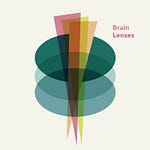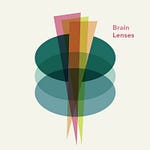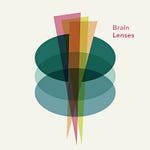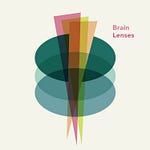This month we talk about lidar, Tesla, and self-driving vehicles.
We also discuss virtual training, vehicular real estate, and fatal accident rates.
—
Transcript
Lidar, depending on who you're talking to and within which industry they work, stands for laser imaging, detection, and ranging, light detection and ranging, or just a rough combination of laser and radar.
The first lidar-ish technology was deployed in practical hardware form in 1961 when the Hughes Aircraft company came up with a means of using the recently invented laser to calculate distances. It accomplished this by calculating the time it took for a sent signal to bounce back to the source, where sensors would pick it back up and do the necessary computations.
Lidar systems are used all over the place these days, including for consumer-grade utilities like scanning 3D objects with the LiDAR in one's iPhone, to measuring the depth of deep water and detecting ancient ruins under dirt and rainforest canopies, to studying the surface of the Moon.
Many of the first real-world applications for LiDAR were weather-related, as the National Center for Atmospheric Research used it to scan clouds and track air pollution levels.
In the years since, the lasers used in this sending and receiving of signals process has dramatically narrowed, allowing LiDAR to be used to scan individual molecules, alongside its larger-scale utility for mapping archeological sites or, in some cases, shooting waves of green lasers down to earth from orbiting satellites, as was the case in Japan and Hawaii in two recent, dramatic-looking captured-on-camera instances.
Those satellite beams were purportedly for weather-tracking purposes, though it's also possible to use similar technologies to scan on-the-ground facilities for military or espionage purposes—it's a very multi-scale, multi-purpose suite of tools.
Though LiDAR is used all over the place, it's been posited that its most useful, eventually most common utility, might be in a space that's seemed to plateau a bit after about a decade of incredibly rapid growth and development, but which is actually still moving forward, if somewhat more ponderously, just beneath the surface of the news—and that's what I'd like to talk about today, the still growing, not dead yet world of autonomous vehicles.
—
The original pitch for autonomous cars, most prominent in the early 2000s and presented with a fervor that netted gobs of investment dollars in the 20-tens, goes something like this:
If we can remove humans from the driving equation, we'll prevent traffic accidents, thus reducing driver and pedestrian, and cyclist deaths, we'll eliminate drunk-driving and allow people to get home from wherever they're at any time of day, any place to any other place, making transportation more flexible and equitable; we can remove the necessity to pay human drivers, which over time will dramatically reduce the cost of all transportation, we can make vehicles more efficient, allowing them to interact with each other, all of them knowing what all the others are doing, and that can make traffic a thing of the past, and allow cars to do the same work in less space, because everything will be moving like clockwork—narrow lanes are fine because everything is algorithmic.
The initial version of this potential future, according to this conception of things, would be autonomous taxicabs, summoned like Ubers, via apps, and some of these vehicles would be owned by Uber or other similar companies, but it's possible you could even have folks loaning out their personal cars when they're not using them, so rather than taking up space in a garage or parking spot, these cars are always being used, earning money for their owners and expanding the number of available vehicles at any given time, becoming more of an asset and less of a liability for car owners while also serving as the backbone for what would amount to an ultra-flexible form of mass transit.
Cars would also be more efficient in terms of energy, because of all those connections between vehicles, speeding up trips substantially, and all of the vehicles would be electric, so they could do their jobs, pop in for a possibly automated cleaning from time to time, and stop by a charger, plugging themselves in, or maybe just swapping out their spent batteries for new ones at little facilities that look a bit like car washes—again, as much of this as possible would be automated to keep costs and other expenditures low.
As it turns out, realizing even the fundamentals of this dream—the very first step of making cars capable of operating autonomously, without human intervention from the driver's seat or remotely—was not as much of a cakewalk as we thought it might be a handful of years ago.
For a long while folks in this space were predicting the deployment of fleets of autonomous electric Teslas and other such cars sweeping around cities, picking people up and dropping them off all over the place, within the next couple of years.
Those projections were pushed back and back and back, and a series of fairly devastating and deadly crashes and other incidents in some of the most popular vehicles capable of consumer-grade versions of autonomous driving have further limited the tech's deployment, as regulators have grown increasingly alarmed, lawmakers haven't wanted to deal with the consequences of approving technologies that might kill even a few people in their districts, more lawsuits have been filed by those who have been severely injured by autonomous vehicles, or on behalf of people killed by such vehicles, and as it became clearer that getting to 98% effectiveness in this matter wasn't enough: all those edge cases add up quickly if you're operating at the scale these companies want to operate at.
It's within that context—that of a somewhat humbled industry—that recent revelations of new milestones, successful deployments, and a glimmer of hope for that long-lusted-after dream have begun to arrive, only whispered about in most cases, but still—actual movement that is seemingly quite real.
In early June 2023, for instance, Mercedes received the first permit in California allowing it to sell vehicles with hands-free, eyes-off automated driving capabilities.
There are plenty of caveats to how this tech can be used by drivers, but it essentially means whomever is sitting in the driver's seat won't have to keep their hands on the steering wheel while the car drives them along the highway or surface streets, and they can watch videos, play games, or play with one of the many apps that are coming to the touchscreens on newer Mercedes models rather than having to keep their eyes on the road.
This is not normal, currently, as most automated driving systems require drivers keep their hands on the wheel and/or eyes on the road—and this is in many cases enforced, with the car sounding alarms and/or slowing down or even pulling over if their sensors detect the driver closing their eyes for too long or losing hand-contact with the steering wheel for more than a few moments.
Those limitations have severely capped the utility of automated driving systems, making them into something of a gimmick for most users; something that's cool to show to your friends, or useful if you want to periodically take your hands off the wheel when you need to help your kids in the back seat with something—but otherwise a far cry from the dream of sitting down in a car and being carried from point a to point b without yourself needing to do anything, and as casually as summoning an Uber is, today.
That's an important, maybe even pivotal distinction, as being able to focus on things other than the road while operating a vehicle opens up a range of possibilities in terms of how one might spend one's time in a car, allowing drivers to become passengers, which in turn allows them to do work, play games, chat with their fellow passengers, and otherwise treat their car like a taxi, all the humans passengers, the driver an unpaid robot.
The future-forecasting version of autonomous vehicles includes visions of van-sized self-driving vehicles that allow passengers to hop aboard and, for instance, make use of exercise equipment, the vehicle's passenger compartment decked-out like a gym, or maybe the passengers can sit and enjoy a newly released film, the passenger compartment optimized for film-screening.
The opportunities are huge, as this could convert all these consciously piloted vehicles, which require at least one human's constant attention to operate, into moving real estate, basically, little rooms that move around, which changes their dynamic, their utility—completely redefining what it means to take a road trip—and their place in society, not to mention all the business models associated with them.
At the moment, though, again, this tech is mostly limited, as most rules require folks pay attention and be ready to take over for the autonomous system, should doing so prove necessary.
And this, honestly, seems like a fairly prudent requirement right now, given the state of the tools available.
The news is awash in instances of autonomous taxis killing people's dogs, running stop signs, plowing into other cars, and hitting cyclists and pedestrians.
Tesla vehicles, which almost universally allow people to use versions of autonomous driving software if they choose to do so, and which, interestingly, is one of the few brands that has been orienting away from using LiDAR systems, even to the point of removing LiDAR hardware from older models when they're brought into shops for tune-ups, have famously killed several of their occupants (and other people into which they've plowed), and though Tesla CEO Elon Musk continues to insist that fully autonomous driving is right around the corner, since 2021 alone, Tesla cars have caused at least 736 crashes, causing 17 fatalities in the process.
There's more to that Tesla portion of this story, though, as the company has been criticized for concealing these numbers, until forced by law to divulge them, and has reportedly released polished, possibly outright false numbers about the company's crash-rate, as well—which is the number of crashes compared to the number of miles driven; the company claims Teslas in "full self-driving" mode experience one-fifth as many crashes as human-driven cars, which Musk says suggests it is a moral imperative to switch over to this technology in as many vehicles as possible, as quickly as possible.
Other, outside estimates, though, using Tesla's diluted numbers for their calculations, suggest that Teslas in full self-driving mode have a fatal accident rate of 11.3 deaths per 100 million miles driven, compared to a mere 1.35 deaths per 100 million miles driven—about one-tenth the rate as Teslas—in human-driven cars.
If accurate, that would mean Teslas using this version of autonomous driving technology are killing people at a rate ten-times as high as other passenger vehicles; which is not the only data point we can use or should care about here, but it's not a great look for an aspect of the automobile industry that's looking to expand and having trouble gaining traction, either.
Worth considering here, though, whichever brand we're looking at, is that deaths and injuries caused by autonomous vehicles will always seem more brutal and horrible and scary than those caused by human-driven cars, because the latter is normal and we've adjusted to that potential, to that reality, whereas the former, software-driven cars, is new and unusual and burdened by our warranted concerns and emotional response to the idea of being injured or killed in what seems to be an even more horrific fashion—a bit like how dying in a plane crash seems more horrible to most people than dying in a car accident, and because of that imbalance in perceived horribleness, that fact that dying in a car accident is far more likely than dying in a place crash doesn't do much to assuage the fear of flying many of us experience, despite being perfectly calm in a car.
All of which is to say: there are legitimate concerns about the numbers being reported and tracked by various entities within this industry, but there are also complications related to how we perceive the two types of transportation, because of that perception of helplessness associated with autonomous driving.
That said, elsewhere in this space, we are seeing growth and fairly favorable numbers.
General Motors recently invested a fresh nearly $3.5 billion in its self-driving car subsidiary company, Cruise, despite this unit being a fairly substantial drain on GM's resources, never having even come close to making a profit; and worth noting here is that while GM now controls 80% of Cruise, while Microsoft, Walmart, and Honda are minority investors.
Cruise is currently waiting for regulatory approval to charge would-be passengers for ride-hailing services in San Francisco—basically allowing the company to provide Uber-like services for folks who summon these driverless cars using an app.
The company already provides this service for a test-group of non-paying customers during overnight hours, but if the permit is approved, it'll be able to offer that service to anyone who wants to use it, 24/7, across the city.
Another Cruise effort in Phoenix has a small number of autonomous vehicles hauling people around town, alongside a parallel effort to use the technology for delivering groceries from Walmart, while another allows a small number of these cars to operate as a paid taxi service in Austin, Texas.
Back in May of 2023, Uber announced that it would start offering driverless car ride-hailing services through Waymo, and delivery services through its central app.
That's an interesting development because Waymo is owned by Alphabet, Google's parent company, and Alphabet and Uber have traditionally been serious competitors in this space, each hoping to make it to fully autonomous taxi services before the other, even to the point that there was a 2017 trade secret dispute between the two companies that got pretty messy; Uber ultimately had to pay Waymo $245 million in stock to settle the lawsuit.
So there are legal developments, business-world developments, and new partnership developments, even as some of these technologies and the folks behind them continue to suffer from serious reputational issues, many of them related to crashes, deaths, and behavioral weirdness, like having fleets of these vehicles inexplicably gum-up traffic, block roads when they lose their wireless internet signal, or as in one recent instance, hinder emergency services following a mass shooting.
Maybe the most important development here, though, is the increasingly broad recognition by the folks running these companies and deploying these technologies that this is not something that's going to happen overnight, and those dreams of having robo-taxis outfitted as gyms probably won't be realized next year, or possibly even this decade, because the problems they need to solve, both in the fundamentals and in the edge-cases, are just really difficult to tackle, especially at scale and at a price-point that will be broadly deployable for their intended use-cases.
These companies continue to put their cars on roads whenever possible, almost always in very controlled conditions—ferrying residents of retirement communities from one end of a residential block to the other, for instance, back and forth and back and forth, endlessly—alongside constantly evolving virtual trips that are increasingly realistic and which allow them to train the in-car software without having to put lives or vehicles at risk.
This allows them to rack up millions of hours of car-driving experience relatively inexpensively, and these efforts are running parallel to other efforts that are helping them refine their sensors and such, which allow the cars to perceive what's going on around them better and implement all those real-life and in-software learnings.
In theory, this collection of technologies should eventually allow us to enjoy safer, more efficient passenger transport, and might even spark the development of entirely new, cars-as-real-estate sorts of industries.
We're still at the early stages of development and deployment though where, despite our knowledge of how to do a lot of what we'll need to do to make that vision a reality, the day-to-day implementation leaves a lot to be desired, and is in many cases still too dangerous, perceptually if not always practically, for the average person to feel comfortable using this tech regularly, as more than just an interesting experience.
Most common use-cases for this tech, for the foreseeable future, then, will likely be in highly controlled circumstances, which will allow these vehicles to operate a bit like more-flexible versions of existing mass-transit options—that allows them to operate in circumstances with set beginning and ends points, a more finite pool of unknowns and hazards, and a lot less interaction between these autonomous systems and human-controlled versions of the same.
—
Show Notes
https://techcrunch-com.cdn.ampproject.org/c/s/techcrunch.com/2023/06/08/mercedes-first-to-sell-vehicles-in-california-with-hands-free-eyes-off-automated-driving/amp/
https://www.ktvu.com/news/dog-dies-after-being-hit-by-self-driving-car-in-san-francisco
https://arstechnica.com/cars/2023/06/the-death-of-self-driving-cars-is-greatly-exaggerated/
https://www.washingtonpost.com/technology/2023/06/10/tesla-autopilot-crashes-elon-musk/
https://archive.ph/lVlIh#selection-3143.0-3152.1
https://www.theguardian.com/technology/2023/jun/12/san-francisco-robotaxi-hinder-emergency-crews-shooting
https://www.axios.com/2023/06/23/pedestrian-deaths-cars-suvs-roads-unsafe
https://prospect.org/justice/06-13-2023-elon-musk-tesla-self-driving-bloodbath/
https://journals.ametsoc.org/view/journals/bams/44/9/1520-0477-44_9_564.xml
https://www.thedailybeast.com/chinese-satellite-likely-shot-green-laser-wall-over-hawaii
https://en.wikipedia.org/wiki/Lidar











